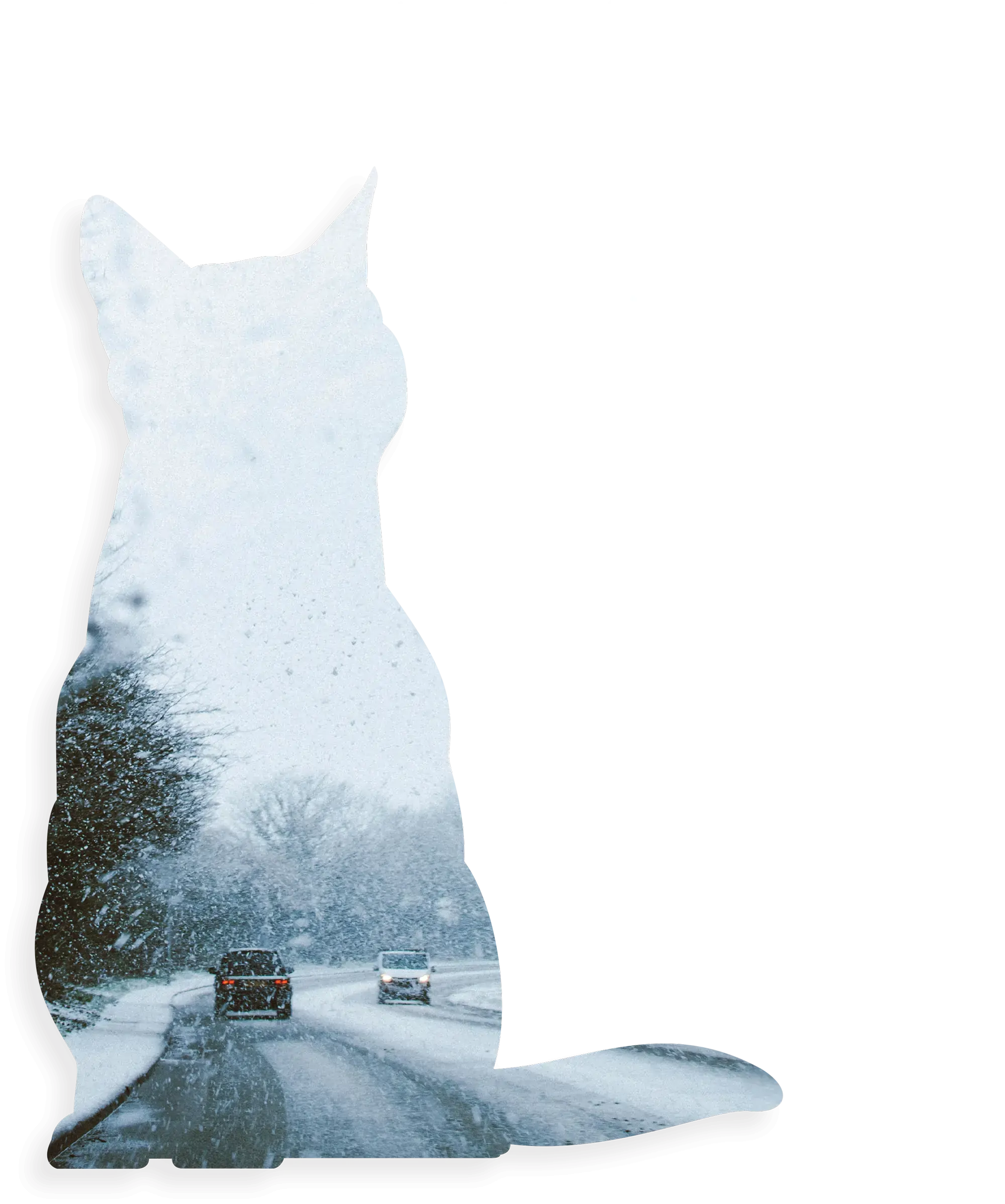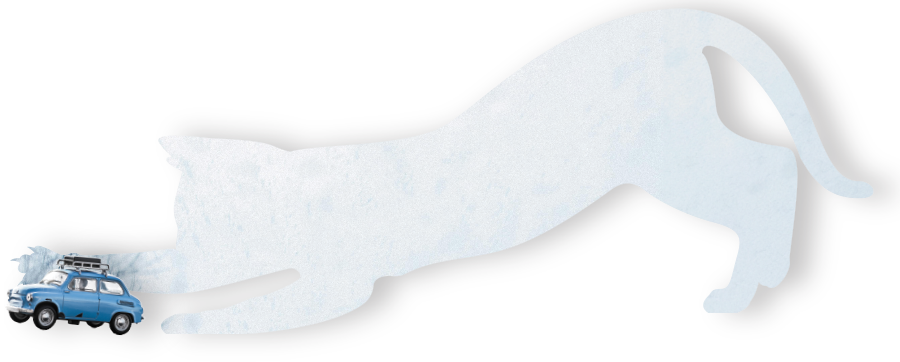
by Lynn Paolillo
 s grooming cats easy?”
s grooming cats easy?”
This is a question I get asked quite frequently, especially about the differences between grooming dogs versus cats. And the answer isn’t a simple yes or no, because I’ve found that saying “grooming cats is easy” is like saying “driving in the snow is easy.” It struck me how grooming cats and navigating snowy roads require a surprisingly similar set of skills. Both demand precision, patience and a deep understanding of the environment at hand.
Preparation Is Key
Before embarking on a journey over snow-covered roads or beginning a grooming session with a new cat, preparation is essential. Just as you wouldn’t drive in the snow without proper tires and emergency supplies, you shouldn’t approach cat grooming without the right tools and mindset. Your salon space should be as ideal as possible with a calm and well-organized environment. Everything should be where you need it, when you need it—just like you wouldn’t forget any of your travel essentials at home before leaving for a trip.
Mental preparation is equally as crucial. Whether facing an icy road or a fussy feline, staying calm and focued is vital. It’s about anticipating potential challenges and being ready to tackle them head-on. When scheduling a cat’s groom, ask additional questions to learn about their potential temperament, any possible pain or previous injuries, and their current coat condition. This information can help to make sure you have the proper environment, you have an assistant if needed, and you have scheduled plenty of time if the cat seems particularly challenging or matted.
You need to read the signs—whether it’s a cat’s body language or a road’s slippery curve— and respond accordingly. This adaptability comes from experience and a deep understanding of the environment you’re working in.

Understanding Your Environment
Every cat, like every winter road, is unique. Just as you must adjust your driving technique for varying snow conditions, you must also adapt your grooming approach to each cat’s temperament and grooming needs. In both scenarios, being observant is key. You need to read the signs—whether it’s a cat’s body language or a road’s slippery curve—and respond accordingly. This adaptability comes from experience and a deep understanding of the environment you’re working in.
Feline body language isn’t as simple as a flicking tail or the direction the ears are pointed. While those are factors, it’s important to look at the animal’s overall stance and movements to get a full picture of what it is trying to communicate. If the cat responds negatively or escalates during handling of specific areas of the body or when moved into a position, then you’ll need to move to something else or try a different approach. Quick escalations can be signs of pain or discomfort, and the best techniques should prevent aggravating cats, both physically and mentally.
Grooming different cat breeds requires an understanding of their specific needs—much like how driving in snow demands an awareness of how your vehicle reacts to different conditions. Both require a steady hand and a gentle approach. Whether it’s avoiding snags in a long-haired Maine Coon or navigating a tight turn on a snowy road, the key lies in your ability to handle situations delicately and thoughtfully.
Patience is perhaps the most critical skill in both these tasks. A grooming session can be longer, especially when dealing with a matted coat or a nervous cat. Similarly, a journey through a snowstorm tests you to remain calm and not rush. Both situations can be frustrating, but the satisfaction of a well-groomed cat or a safely reached destination makes it all worthwhile.
Working methodically and having a solid plan for the cat’s groom will help you with going slowly and carefully, but without taking so long that the cat becomes stressed and impatient due to the length of time. Clipper work especially takes a deft hand to make sure every clipper swipe counts while maintaining safety.

Stay on top of cleaning and maintaining your equipment and tools. Dull and broken blades can lead to skin injuries, and clippers that aren’t serviced regularly can chew and snag hair, leading to frustration for both you and the cat.

Move the skin from the “danger zones” like the armpits and tuck-up by relaxing the cat’s leg and gently rolling the skin to a flat area like the shoulder, side or center of the belly.

Shave in small sections by stretching skin between your thumb and forefinger, and then shaving in between them. This will take longer, but you’ll have much more control and be able to hold the skin flat and firm while shaving more delicate areas or removing mats.

Use your forearm and/or elbow to act as an extra hand to hold or stretch cats who curl up tightly so that you still have your hand free to hold the skin while shaving.
Grooming cats and driving in the snow might seem worlds apart, but they share a surprising number of similarities. Both require preparation, an understanding of the environment, precision in technique and a great deal of patience. Working with an experienced groomer can help you plan and practice staying calm under pressure and tackling challenges with grace.
So, whether you’re navigating icy roads or grooming in your cat salon, remember that success lies in your approach—steady, patient and always prepared for the unexpected.

